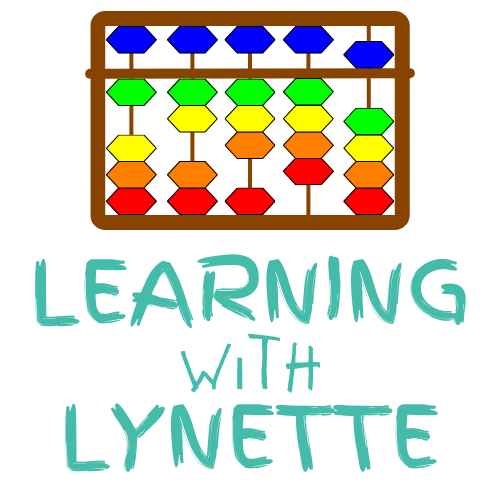
Abacus & School Math: A Parent's Guide
If you to listen to the full session, please check out the podcast here:
The Power of Abacus Learning: Building Strong Mathematical Foundations
As a dedicated abacus teacher, I've witnessed firsthand how this ancient tool transforms the way children understand and interact with numbers. Many parents ask me, "What exactly is an abacus, and how can it help my child?" Today, I'm excited to share the incredible benefits of abacus learning and how it builds a solid foundation for mathematical thinking.
Understanding the Basics: What Is an Abacus?
An abacus is more than just a counting tool – it's a concrete representation of our number system. The fundamental structure consists of beads that can be moved up and down, with a beam that acts as a counting line. When a bead touches this beam, it's counted; when it's away from the beam, it's not. This simple yet powerful concept helps children understand the concrete nature of numbers before moving to abstract mathematical concepts.
Why the Abacus Works: Beyond Traditional Math Learning
Traditional mathematics education often relies heavily on symbols – written numbers that children must mentally convert into quantities. This abstract approach can be challenging for many learners. The abacus bridges this gap by providing:
1. Visual and Tactile Learning: Children can see and touch the numbers they're working with, making abstract concepts concrete.
2. Pattern Recognition: The arrangement of beads helps students recognize number patterns naturally, which is crucial for advanced mathematics.
3. Place Value Understanding: The columns on an abacus represent different place values (ones, tens, hundreds), making our base-10 number system visually clear.
The Five-Frame Connection
One of the most fascinating aspects of abacus learning is how it aligns with and enhances modern educational methods. In kindergarten, children learn about the five-frame – a fundamental concept in early mathematics. The abacus takes this concept further by:
- Allowing children to see and manipulate numbers within the five-frame structure
- Teaching complementary numbers (understanding that 4+1=5, but also that 5-1=4)
- Building a foundation for more complex mathematical operations
Making Learning Fun and Engaging
Learning shouldn't feel like a chore. In my classes, we incorporate various activities to make abacus learning enjoyable:
- Mazes: Students follow paths based on abacus number recognition
- Puzzles: Combining motor skills development with number learning
- Coloring Activities: Integrating artistic expression with mathematical concepts
- Games: Using movement and play to reinforce number concepts
Beyond Basic Arithmetic
While the abacus excels at teaching basic operations, its benefits extend far beyond addition and subtraction. Students who learn with an abacus develop:
- Strong Number Sense: Understanding the relationships between numbers
- Mental Math Skills: Ability to perform calculations quickly in their heads
- Problem-Solving Abilities: Learning multiple ways to approach mathematical challenges
- Confidence: Success with the abacus builds mathematical confidence
A Foundation for Advanced Mathematics
As Albert Einstein said, understanding mathematics isn't about being the quickest – it's about developing deep comprehension. The abacus provides this foundation, preparing students for more advanced mathematical concepts like algebra, trigonometry, and calculus.
Getting Started with Abacus Learning
If you're interested in introducing your child to the abacus, here are some steps to begin:
1. Start with basic number recognition (0-9)
2. Practice simple addition and subtraction
3. Use games and activities to make learning fun
4. Be patient – like any skill, abacus proficiency takes time to develop
Conclusion
The abacus isn't just an ancient calculating tool – it's a bridge between concrete and abstract mathematical thinking. In our increasingly digital world, this hands-on approach to mathematics provides children with a strong foundation that will serve them throughout their educational journey.
Whether your child is just beginning their mathematical journey or looking to strengthen their existing skills, the abacus offers a proven path to mathematical mastery. Remember, every math expert started with understanding basic numbers – the abacus simply makes this journey more tangible, enjoyable, and effective.
Abacus is the gateway to complex Math!
---
Want to learn more about abacus education? Join our weekly live sessions every Wednesday at 9:00 AM Pacific Time, where we discuss techniques, answer questions, and share learning strategies. Together, we can build strong mathematical foundations for our children.
To watch the full session and gain deeper insights, view the video below:
Make sure to sign up to receive our weekly emails from https://learningwithlynette.com
PS: Some of the links in this description are affiliate links that I get a kickback at no cost to you
📚 Looking for a Preschool Abacus Math Workbook https://a.co/d/ghDakcs
Next book: +5 with Who, learning about addition fact family: https://amzn.to/3ZJYKGs
Here is the link for the Abacus Coloring Book: https://amzn.to/4fa1dhF
To learn more about the Abacus, Sign up for my Free abacus class👇 https://learningwithlynette.com/easymath
Sign up for my Abacus Class: https://learningwithlynette.com/signup

